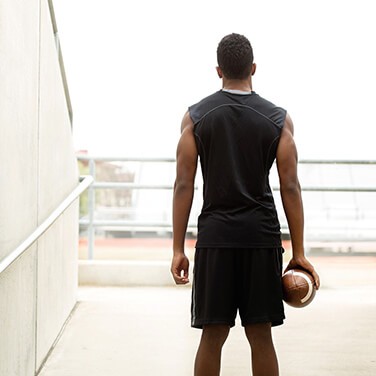High-Tech Sports Equipment Targets Head, Heart Injuries
By Kevin Ritchart
As athletes continue to get bigger, stronger, and faster, sports equipment manufacturers are doing their best to keep pace with the increasing demand for effective protection from traumatic injuries.
Each year, more than 10 percent of the 30 million children who participate in sports sustain some type of injury. Companies that manufacture sports safety equipment are continually making advancements in helmets, pads, eye protection, and other equipment to offer additional safety measures and keep up with demand.
On the Field
While sports safety is a growing concern, very few companies have the resources to be successful. When it comes to technology, research and development, and overall strategy, Riddell has established itself as a leader. The company’s football helmets account for 65 percent of those used by NFL players and 90 percent of NCAA Division 1 players.
In 2013, Riddell debuted the InSite Impact Response System, an in-helmet sensor technology that monitors the severity of impacts and wirelessly transmits the results to the coaches on the sideline when the severity of a hit (or the accumulation of multiple hits) exceeds a predetermined threshold.
Rather than wait for word of this new technology to spread on its own, Riddell dispatched over 300 salespeople throughout the U.S. and Canada to work with coaches, equipment managers, trainers, and school administrators to show them firsthand how the product could make football safer for their players.
In the Lab
In 2011, Virginia Tech University established a “Helmet Lab” that provides unbiased ratings of helmets to help customers make informed purchasing decisions. The helmet ratings, which are the result of more than a decade of peer-reviewed research on head trauma in sports, identify the helmets that most effectively reduce the risk of head injuries. Researchers create testing conditions that mimic the types of impacts players are likely to experience in high school and college games.
Sensors are embedded in a test-dummy head to record the linear and rotational acceleration resulting from various impacts, and those results are used to calculate a STAR value. The STAR value indicates how much each helmet reduces the head’s acceleration, which translates to a lowered risk of head injury. The more stars a helmet earns, the better it is at reducing injury risk. The VICIS ZERO1 helmet earned five stars, the top 2018 rating from the Virginia Tech Helmet Lab.
From the Head to the Heart
While football is typically the first sport to be mentioned when it comes to sports injuries, a company called Unequal has focused its efforts on the diamond. The leading cause of death for youth baseball players is commotio cordis, which is a disruption of the heartbeat resulting from blunt trauma to the chest.
Unequal created the HART Chest Protector using Kevlar, the same material used in bulletproof vests, to respond to the impending commotio cordis protection mandate from the National Federation of High Schools that will go into effect in January 2020.
